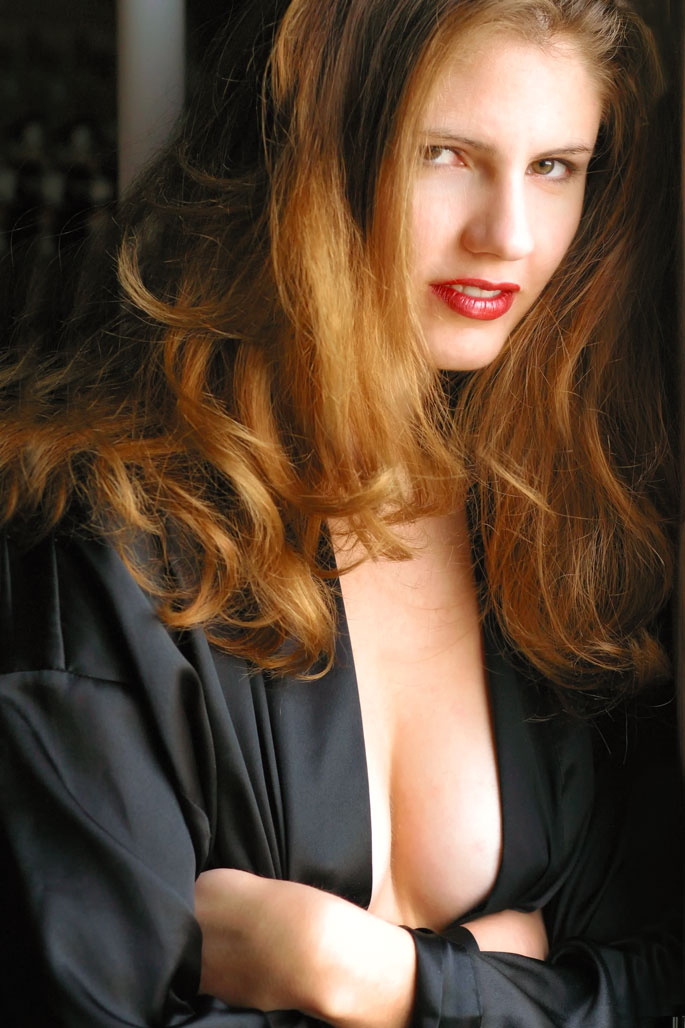Today’s Post by Joe Farace
The late Richard Avedon once said, “A photographic portrait is a picture of someone who knows [that] he is being photographed.” That’s because a portrait seldom represents reality. Instead it’s a snapshot of a point in time that represents an idealized version of someone who knows they’re being photographed.
Today, submitted for your approval, are eight tips that I have found (key words) help make the final portrait look a little bit better than maybe it otherwise would. Use the tips that you like, ignore what you don’t but as always, have fun with your photography no matter what or who you may be photographing.
 Avoid large jewelry. Make sure that your subject’s face, especially their eyes, are the portrait’s main focus. And ask the subject to remove her wristwatch too.
Avoid large jewelry. Make sure that your subject’s face, especially their eyes, are the portrait’s main focus. And ask the subject to remove her wristwatch too.- Ask your subjects to wear solid colors. Nothing detracts more than clothes covered in busy patterns and prints. I recognize this is easier to ask for than actually accomplish.
- Clothing fit. If a subjects clothes don’t fit as well as you might like, use wooden clothespins (out of camera range) to snug them up. And this happens to me more than you think.
- Hairstyles. Ask the subject to slightly change their hair with each change of clothing. One of my favorite tricks is to have them spray their hair with water; some subject’s hair gets curly, some goes straight but either one can produce great looks.
- Expression. Some people look great with a smile, while others look better without one. The only way to find out which way your subject’s looks best is to try both approaches. If you’re lucky, the subject looks great both ways providing lots of different looks.
- Make-up. When changing hairstyles or outfits, ask the model to changes her make up style and color too. It doesn’t have to be drastic, maybe a different lipstick color or darker eye shadow. Avoid the flat monochrome look that’s seems to be popular with some women. They may think it looks great for everyday life but it sometimes looks dead in photographs.
- Footwear. For a more a statuesque posture, ask the model to wear her highest heels that she can walk in. Key words. No high heels? Ask her to stand on her toes for a few shots.
- Relax. A shoot is a team effort. Subject and photographer must work together to achieve the best possible images. Most importantly, don’t forget to talk to your subject during the shoot and maybe show them a few images on the camera’s LCD to encourage their active participation.
How I made this shot: Model with a PhD in Entomology Kim Goetz was, perhaps, my second muse, although I may not have known or appreciated it at the time. She was photographed near the back door of my former home using only natural light; the door had a window in it with a 32-inch Westcott reflector was placed at camera left. Camera was a Canon EOS 50D with EF 85mm f.1.8 lens, my favorite DSLR portrait lens. Exposure was 1/60 sec at f/5 and ISO 1000.
If you’re interested in learning how I shoot available light glamour portraits, please pick up a copy of Available Light Glamour Photography which is available new from Amazon.com for $19.50 with used copies starting at $17.49, as I write this. The Kindle version is $16.99 for those preferring a digital format.
